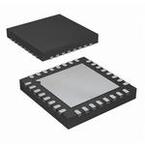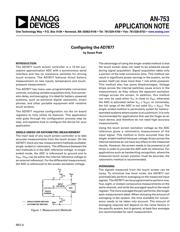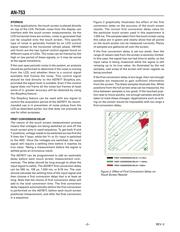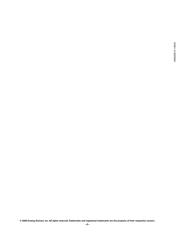下载

AN-753
APPLICATION NOTE
One Technology Way • P.O. Box 9106 • Norwood, MA 02062-9106 • Tel: 781/329-4700 • Fax: 781/326-8703 • www.analog.com
INTRODUCTION
The AD7877 touch screen controller is a 12-bit suc-
cessive approximation ADC with a synchronous serial
interface and low on resistance switches for driving
touch screens. The AD7877 features direct battery
measurement on two inputs, temperature and touch-
pressure measurement.
The AD7877 has many user-programmable conversion
controls, including variable acquisition time, rst conver-
sion delay, and averaging. It is ideal for battery-powered
systems, such as personal digital assistants, smart
phones, and other portable equipment with resistive
touch screens.
The AD7877 requires conguration via the on-board
registers to fully utilize its features. This application
note goes through the conguration process step by
step, and explains how to congure the device for your
application.
SINGLE-ENDED OR RATIOMETRIC MEASUREMENT
The main task of any touch screen controller is to take
accurate measurements from the touch screen. On the
AD7877, there are two measurement methods available:
single-ended or ratiometric. The difference between the
two methods is in the ADC reference voltage. In single-
ended mode, the ADC is referenced to ground and to
V
REF
. (V
REF
can be either the internal reference voltage or
an external reference). For the differential measurement,
the ADC is referenced to the screen excitation voltage.
ADC
INPUT
(VIA MUX)
TOUCH
SCREEN
V
REF
V
CC
X+
REF+
SINGLE-ENDED METHOD
RATIOMETRIC METHOD
REF–
Y+
Y–
GND
Figure 1. Measurement Methods
Conguring the AD7877
by Susan Pratt
The advantage of using the single-ended method is that
the touch screen does not need to be powered except
during signal acquisition. Signal acquisition takes only
a portion of the total conversion time. This method can
result in signicant power savings in the system, as the
screen itself can draw more than 1 mA while powered.
This method also has some disadvantages. Voltage
drops across the internal switches cause errors in the
measurement, as they reduce the apparent excitation
voltage across the screen. In addition, this method
can only be used when V
CC
is close to V
REF
, otherwise
the ADC is saturated (when V
CC
> V
REF
), or conversely,
the full range of the ADC is not used (V
CC
< V
REF
). The
single-ended method is particularly suited for battery-
operated systems where power is at a premium. It is only
recommended for applications that use the nger as an
input device, and therefore do not need high accuracy
measurements.
Using the touch screen excitation voltage as the ADC
reference gives a ratiometric measurement of the
input signal. This method is more accurate than the
single-ended method because voltage drops across the
internal switches do not have any effect on the measured
results. However, the screen needs to be powered at all
times in order to provide the ADC with its reference. For
applications such as handwriting recognition, where the
measured touch screen position must be accurate, the
ratiometric method is recommended.
AVERAGING
The signals measured from the touch screen can be
noisy. To minimize low level noise, the AD7877 can
automatically perform averaging on the measured input
signals. The AD7877 can be programmed to perform one,
four, eight, or sixteen consecutive measurements on the
same channel, and write the averaged result to the result
register. The more averages the part performs, the longer
each measurement takes. When choosing the amount of
averaging in the system, the time available for conver-
sions needs to be taken into account. The amount of
averaging required will depend on the noise factors in
the specic system, but in general, at least four averages
are recommended for each measurement.
REV. 0






